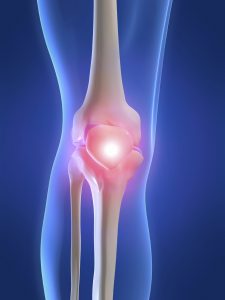Brian Schiff’s Blog
Injury Prevention, Sports Rehab & Performance Training Expert
One of the great things about being a columnist for PFP Magazine is that I often get to test out the latest fitness equipment on the market. While there are certainly some very gimmicky things out there, I have some ‘go to’ selections in my toolbox, such as the BOSU®NexGen™Pro Balance Trainer. It is the latest version of this training tool.
In my clinic, I rehab lots of athletes suffering from gluteus medius weakness, poor pillar stability and decreased hip stability. Many of my clientele are working to make it back from ACL reconstruction. One of my preferred strengthening exercises to target the shoulder, torso and hips is split squats. Once the client masters proper form on the ground, I move to an unstable setting using the BOSU®.
It is essential to challenge athletes to avoid valgus collapse. The BOSU® introduces instability at the ankle forcing the body to adapt during the split squat movement. Avoiding dynamic valgus and trunk dominance during training will help with injury reduction efforts for the client.
In the video below I produced for my PFP online column, you will see how to use this exercise effectively to improve strength, stability and proprioception.
Bridging is a fundamental exercise to promote hamstring and glute strength. In addition to hip strength, I look for opportunities to enhance anti-rotation/pelvic stability with many bridging progressions due to the weakness and asymmetries I see in my clinic. It will also facilitate hip dissociation.
The stability ball provides an element of instability that can further challenge hip and pillar stability. This exercise is big bang for your buck exercise that can be used in rehab and training circles. Check out the video below that is part of my ‘Functionally Fit’ column for PFP Magazine.
Click here to read the entire column.
One of the biggest challenges for clients overcoming knee injuries and surgery is regaining their quadriceps strength and fighting atrophy. This is increasingly so for my clientele on crutches for any extended period of time. It is paramount to use modalities early on in the rehab process such as electrical stimulation and blood flow restriction training to combat atrophy and loss of strength.
Once appropriate, I always move to single limb training to eliminate imbalance and asymmetry. While pistol squats are one of the most effective single leg quadriceps exercises, not all clients can perform this movement. So, in many cases I opt to use a single leg box squat (see video below).
For more information on specific progressions and regressions, click here to read my entire online column. Keep in mind that you should never force through any painful range of motion as this likely indicates excessive strain on the patellofemoral joint.
Knee pain is prevalent among adolescents and active adults. Patellofemoral pain and osteoarthritis are the most likely causes of pain. It may be present with squatting, lunging, prolonged sitting, kneeling, running, jumping or twisting.

Research seems to support a combination of hip and knee strengthening as a primary line of defense and treatment for knee pain. Interestingly, males with PFP do not seem to have weakness in the gluteus medusa like their female counterparts. The link below is an abstract that speaks to this difference between the two groups:
https://www.ncbi.nlm.nih.gov/pubmed/30090674
Other modalities used to address anterior knee pain include patellar bracing/taping, blood flow restriction training, dry needling/acupuncture and soft tissue work seems to bring more questions accordion to some experts.
Click here to read the 2018 Consensus statement on exercise therapy and physical interventions (orthoses, taping and manual therapy) to treat patellofemoral pain from the 5th International Patellofemoral Pain Research Retreat.
Clinically, I have seen good results with the following:
1. Activity modification
2. Glute and quadriceps strengthening
3. Blood flow restriction (BFR) training
4. Sequential and progressive loading based on pain response
In the majority of patients I see with knee pain or knee dysfunction, I uncover gluteal weakness and poor proximal muscular stability. This can cascade into overpronation, vagus collapse, poor balance, and any number of kinetic chain issues. While this may not be a big deal for sedentary individuals, it becomes a very big deal for athletes and those performing repetitive loading.
When searching for the best exercises to selectively strengthen the gluteal muscles, it is always wise to see what science has to say. More is not always better. I am all for efficiency and finding the most effective exercises in activating the glute over the tensor fascia lata (TFL). In this post, I am sharing a good exercise to do just that. Prior research has indicated that sidestepping and clamshells are very effective in doing just this. Click here to read a prior post on this.
The video below will walk you through his to do the running man exercise.
Click here to read my PFP column on this exercise.

